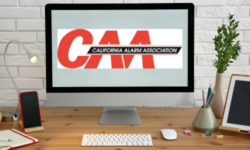What Dealers Need to Know About South Dakota v. Wayfair Landmark Decision
The impact of the U.S. Supreme Court’s decision in South Dakota v. Wayfair, now over a year since it was handed down, continues to reverberate throughout the business world.

You may be familiar with Wayfair.com, the online retailer that sells ready-to-assemble furniture and other home furnishings and décor items from more than 10,000 suppliers.
The e-commerce giant in recent time was embroiled in taxation litigation that carries implications for industries beyond retail, including the very basic functions of any business with multistate operations. This can encompass the work of installing security contractors.
Last year, the United States Supreme Court ruled 5-4 in South Dakota v. Wayfair that states can mandate that businesses without a physical presence in a state with more than 200 transactions or $100,000 in-state sales collect and remit sales taxes on transactions in the state.
Wayfair, as did many Internet sellers, relied on a 1967 Supreme Court ruling that the Commerce Clause and the Due Process Clause prohibit states from taxing remote sellers without a physical presence within a state. In 1992, the Court affirmed its earlier ruling in Quill v. North Dakota.
In Quil the court reiterated its earlier position, but it based its decision only on the Commerce Clause, and invited Congress — which has the power under the Constitution to regulate interstate commerce — to intervene and write the rules for how and under what circumstances states can tax remote sellers (don’t hold your breath). Of course in 1992 the Internet was just a way for nerds to communicate.
Fast forward a quarter of a century and Internet sales are a $500 billion industry. The State of South Dakota required Wayfair to collect and remit sales taxes, even though Wayfair had no physical presence in the state.
It is important to note that the items that Wayfair was selling were already taxable in South Dakota, the issue was that Wayfair wasn’t collecting the tax from its customers.
Sales taxes are actually “sales and use” taxes in that the tax is applied to a sale of a good or service to an end user. Theoretically, if a seller doesn’t collect and remit the tax, the end user is responsible for its payment.
Many business owners find out about this the hard way when, during a state sales (and use) tax audit, the auditor wanders around their building looking for items that they may have purchased online, asks for proof of use tax payment, and, dings them for failure to pay.
Non-business consumers are also responsible for paying use tax on items that they purchase online, but very few do. This was the point of the South Dakota law and what landed both parties in the Supreme Court. The Supreme Court ruled in favor of South Dakota stating that the physical presence rule creates cross-border “distortions” because it discourages out-of-state sellers from having an in-state physical presence and encourages customers to buy from out-of-state vendors.
Particulars of Monitoring
So, what does that mean to a security company? First, keep in mind that Wayfair doesn’t make anything taxable that wasn’t already taxable in South Dakota or in any other state. With the exception of the online sale of equipment in a DIY scenario, security companies typically install parts and equipment at the customer’s location.
The fact that a technician (subcontractor or employee) is actually in the state at the customer’s location and installing the equipment, gives your company a presence in the state. Monitoring is a bit different; some states tax monitoring, others don’t. If monitoring isn’t taxable in the state, Wayfair doesn’t make it taxable.
If monitoring is taxable in the state, and your company has no presence (i.e. the equipment just installed itself and you never have to make a service call), you may be able to make an argument that you aren’t required to collect and remit the tax.
If the state requires you to collect and remit the tax, the Wayfair decision does affirm this requirement. Keep in mind, though, the service is still taxable; and, if you don’t collect and remit the tax, your customer would still be responsible for it.
The other factor is that most states’ licensing regulations require that the licensee have a physical presence in the state (whether you have an office or not). If your alarm license requires a physical presence, then you have a physical presence, and you must collect and remit sales and use tax if the underlying goods and services are taxable.
Don’t go into a new state without being thoroughly aware of that state’s sales, use, ad valorem, employment, franchise, gross receipts, income and other taxes. Most state taxing authorities maintain audit and enforcement offices in other states to collect taxes from out of state companies.
Many state tax codes allow the local taxing authority to enforce a lien for taxes levied in another state. There have been a few cases in which companies selling “free” alarm, camera and automation systems for $65 a month on 72-month “monitoring agreements” have been challenged and lost.
The result is that the state recharacterizes a huge chunk of the “monitoring fee” as an installment sale and levies sales and use tax on the alarm company.
This is why it takes us hours to research sales tax for our clients entering new states. State tax codes are often vague (for example Texas taxes intrusion alarm monitoring but not fire alarm monitoring), and case law can supersede tax codes.
Mitch Reitman is Managing Principal of Reitman Consulting Group and is a member of the SSI Industry Hall of Fame.
If you enjoyed this article and want to receive more valuable industry content like this, click here to sign up for our FREE digital newsletters!

Security Is Our Business, Too
For professionals who recommend, buy and install all types of electronic security equipment, a free subscription to Commercial Integrator + Security Sales & Integration is like having a consultant on call. You’ll find an ideal balance of technology and business coverage, with installation tips and techniques for products and updates on how to add to your bottom line.
A FREE subscription to the top resource for security and integration industry will prove to be invaluable.







